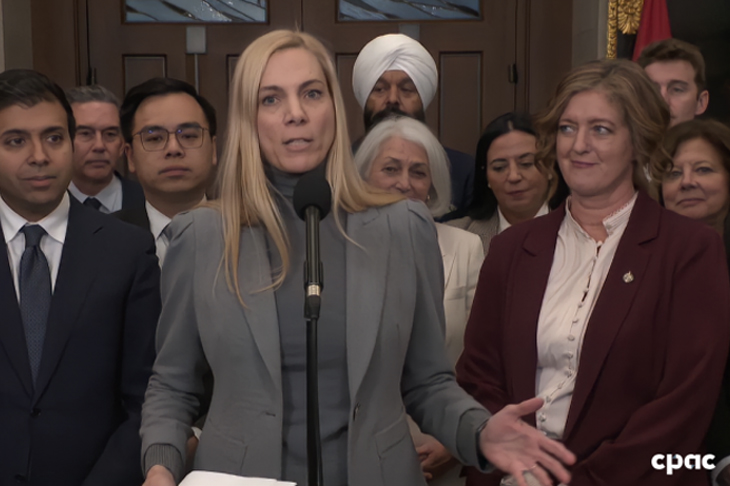By Greg O’Brien
GATINEAU – If you’re looking for drama, day one of the CRTC’s wireless policy review hearing was not for you.
That’s not to say it was boring, however. During the morning session, we got an engaged CRTC chair Ian Scott taking a deep, detailed dive into the Competition Bureau’s evidence as well as its idea for mandating a tempered vision for mobile virtual network operators (MVNOs) in Canada.
The Bureau is not for broadly mandating an MVNO structure where any company that comes along wanting to sign up wireless subs using a CRTC-decree as the crowbar can get into the wireless business in Canada. In fact, its MVNO model, if adopted, would bring no new competitors into the market here – but it could very much strengthen the existing regional players like Freedom, Videotron, Eastlink and Xplornet by giving them a way to expand their markets rapidly.
While decrying the market power of the Big Three of Rogers, Bell and Telus in most regions of the country the Bureau, as we’ve reported previously, has come up with a solution to boost the smaller players (it calls them regional disruptors) already serving various regions. Namely, only existing regional players should get mandated MVNO access to incumbent networks in regions where they own spectrum, but have not yet built networks. The regionals could have MVNO access under that scenario for up to five years.
That would allow Freedom Mobile, for example, to launch immediately in places where it has already purchased spectrum like Fort McMurray, Alta, and Sarnia, Ont., riding on an incumbent wireless network until it constructs its own network in those cities. The other regional providers have similar examples.
That would mean, if the CRTC adopted the Bureau’s plan, no new wireless companies could use a mandated MVNO to come to market. They could always still come to a freely negotiated agreement, but we’ll hear later in the hearing from others how well that hasn’t gone.
Why did the Bureau choose this model to propose? “The evidence in this proceeding has shown facilities-based competition from these wireless disruptors is working, and this finding should guide the path forward,” said Commissioner of Competition Matthew Boswell Tuesday.
The Bureau’s expert, Dr Tasneem Chipty (pictured above) of Matrix Economics, outlined how a regional competitor which has captured from 5.5% to 20% of a given market (she measured Census Metropolitan Areas and not provinces, for higher accuracy) brings prices down, boosts data buckets and promotes wireless data usage by Canadians – with no impact on network quality.
“If their business is threatened, they will respond by doing something innovative, either by offering more data or lower prices or maybe a combination of both.” – Dr. Tasneem Chipty, Matrix Economics
“Prices in these areas would be even higher but for the presence of a strong regional,” she told the panel of commissioners on Tuesday. “If their business is threatened, they will respond by doing something innovative, either by offering more data or lower prices or maybe a combination of both,” she later added.
Chipty also pointed to the introduction of Freedom Mobile’s “Big Gig” plans 28 months ago as the primary catalyst for recent Canadian mobile pricing declines. Essentially, when the incumbents began to see customer losses and feel the pain thanks to Freedom, they countered with offerings of more data and lower prices of their own and then in the summer of 2019 began to reprice and simplify much of their legacy offerings.
When it comes to that competition though, executives from Shaw Communications-owned Freedom told commissioners there need to be rules guarding against customer win-backs because the costs of the Big Three’s subscriber save tactics – sometimes happening right in the store when a customer is porting his or her number to Freedom – has significant costs and are unfair.
“The Big Three have been particularly aggressive and predatory in their pursuit of customers who have indicated a desire to port or are in the midst of a port, going so far as to call them while they’re in our stores on their phones and offering a substantial, even-better-than-retail offer in order for them to walk out of our store,” said Shaw Wireless president Paul McAleese. (Ed note: For what it’s worth, the last time we switched, from one Big Three carrier to another, we got a win-back call while still in-store. We went ahead with the switch anyway.)
“So we’re left with a big chunk of cellophane, an empty box and a bit of a broken heart.” – Paul McAleese, Shaw Wireless
Under questioning from commissioner Christopher MacDonald, McAleese said these win-back offers are very costly for Freedom. “As we move to a world where the average price of a phone in our store is over $1,000… when we do nothing more than crack the cellophane on an iPhone box, it’s worth $200 to $250 less than it was 10 seconds before (because the phone is no longer considered new).
“So, when someone comes into a store… and starts the process of opening a new box and moving into a new subscribership and then gets a phone call from one of the incumbents to come back and get some ridiculous, way-below-rack-rate type of offer… that predatory call costs us hundreds of dollars in cash for what is often times more than a 20-30 minute interaction with a customer who by the way is now across the hall in the mall at one of the Big Three stores.
“So we’re left with a big chunk of cellophane, an empty box and a bit of a broken heart,” added McAleese (pictured below). McAleese proposed a winback window of 90-180 days where a competitor could not try to take back a customer.
Shaw executives (and later Xplornet’s leaders) are also asking the CRTC to make seamless roaming handoffs a mandatory part of the wholesale roaming regime as well. When a customer of Freedom or other regional wireless competitor is on a call inside their brand’s network, that call is dropped the moment they leave their home network to roam on one of the regional’s roaming partners.
Right now, said Brian O’Shaughnessy, Shaw’s SVP wireless and 5G technology, an Ottawa-based Freedom customer who is on a call while heading south down Highway 416 would see their call drop right around Barrhaven, just outside of the city. This doesn’t happen among the Big Three and surely then doesn’t have to happen to Freedom he said, adding this is an old problem that has already been solved. The roadblock is the Big Three just don’t want to help, because the Commission hasn’t yet forced them to. While it would take some time and effort on both sides to make it work and “turn on protocols that already exist” in the networks, there is no investment in technology required and once accomplished, little else need be done, he added.
then doesn’t have to happen to Freedom he said, adding this is an old problem that has already been solved. The roadblock is the Big Three just don’t want to help, because the Commission hasn’t yet forced them to. While it would take some time and effort on both sides to make it work and “turn on protocols that already exist” in the networks, there is no investment in technology required and once accomplished, little else need be done, he added.
Millions of Freedom calls are dropped annually because of this and it is a material problem for the company because it is a leading reason why customers churn away from them, McAleese told the panel. “Twenty-five percent of our churn is related to this issue,” he said.
When asked if he has approached the Big Three to talk about it and come to a seamless roaming agreement on their own, “it’s been a total non-starter,” McAleese responded.
“This is a fantastic way to continue to subordinate Freedom’s cost of service at no cost to the Big Three.”
Day two of the hearing will feature Bell Canada, Cogeco and Tucows, owners of MVNO Ting Mobile.
Photos screen-capped from cpac.ca which is carrying a live stream of the hearing.









